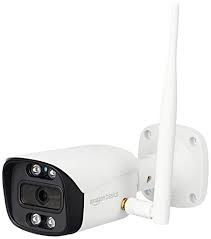Environmental, Health, and Safety (EHS) Audit: Ensuring Compliance and Safety
Environmental, Health, and Safety (EHS) audits play a crucial role in ensuring that organizations comply with regulations and standards related to environmental protection, workplace safety, and health. These audits are comprehensive assessments conducted to evaluate an organization’s adherence to EHS laws, policies, and procedures.
One of the primary objectives of an EHS audit is to identify potential risks and hazards within the workplace environment that could pose threats to the health and safety of employees, as well as impact the surrounding environment. By conducting regular EHS audits, organizations can proactively address issues before they escalate into serious incidents.
During an EHS audit, auditors typically review various aspects of an organization’s operations, including but not limited to:
- Compliance with environmental regulations
- Workplace safety practices
- Hazardous material management
- Emergency response procedures
- Employee training programs
- Waste management practices
By evaluating these areas, auditors can assess whether the organization is meeting regulatory requirements and implementing best practices to promote a safe and healthy work environment.
Furthermore, EHS audits help organizations identify areas for improvement and develop action plans to address deficiencies. By implementing corrective measures based on audit findings, organizations can enhance their EHS performance, reduce risks of non-compliance or incidents, and foster a culture of safety within the workplace.
In addition to regulatory compliance and risk mitigation benefits, EHS audits also contribute to enhancing overall operational efficiency and sustainability. By identifying opportunities for resource conservation, waste reduction, energy efficiency improvements, and pollution prevention strategies during audits, organizations can align their EHS goals with broader sustainability objectives.
In conclusion, conducting regular EHS audits is essential for organizations committed to maintaining high standards of environmental protection, workplace safety, and employee health. By prioritizing EHS compliance through systematic audits and continuous improvement efforts, organizations can create safer work environments while demonstrating their commitment to responsible business practices.
Understanding EHS Audits: Key Questions and Insights
- What are EHS audits?
- What are three types of safety audits?
- What is the objective of EHS audit?
- How to prepare for an EHS audit?
- What is an esh audit?
- What is EHS audit checklist?
- How do you conduct an EHS audit?
What are EHS audits?
Environmental, Health, and Safety (EHS) audits are comprehensive assessments conducted to evaluate an organization’s compliance with environmental regulations, workplace safety standards, and health protocols. These audits involve a systematic review of various aspects of an organization’s operations to identify potential risks, hazards, and areas for improvement related to environmental protection, employee health, and safety. By conducting EHS audits regularly, organizations can ensure that they are meeting regulatory requirements, implementing best practices, and fostering a culture of safety within the workplace.
What are three types of safety audits?
When it comes to conducting safety audits, there are three primary types that organizations commonly utilize to assess and improve their safety practices. The first type is a Compliance Audit, which focuses on evaluating whether the organization is meeting regulatory requirements and standards set forth by relevant authorities. The second type is a Management System Audit, which examines the effectiveness of the organization’s safety management system in place, including policies, procedures, and processes. Lastly, the third type is a Workplace Inspection Audit, which involves physically inspecting the workplace to identify potential hazards, unsafe conditions, and areas for improvement in terms of safety measures and practices. By combining these three types of safety audits, organizations can comprehensively evaluate their safety performance and implement necessary measures to enhance workplace safety and compliance.
What is the objective of EHS audit?
The primary objective of an Environmental, Health, and Safety (EHS) audit is to assess and evaluate an organization’s compliance with relevant environmental regulations, health and safety standards, and internal EHS policies. By conducting EHS audits, organizations aim to identify potential risks, hazards, non-compliance issues, and areas for improvement within their operations. The ultimate goal is to ensure a safe work environment for employees, prevent incidents or accidents that could harm individuals or the environment, and promote sustainable practices that align with regulatory requirements and industry best practices. EHS audits are essential tools for organizations to proactively manage EHS risks, enhance operational efficiency, and demonstrate a commitment to responsible business practices.
How to prepare for an EHS audit?
Preparing for an EHS audit involves thorough planning and organization to ensure a smooth and successful audit process. To begin, it is essential to familiarize yourself with the relevant EHS regulations, standards, and requirements applicable to your industry and organization. Conduct a comprehensive review of your existing EHS policies, procedures, and documentation to identify areas that may need improvement or updating. Engage key stakeholders across departments to ensure everyone is aligned on EHS goals and responsibilities. Implement regular EHS training programs for employees to enhance awareness and compliance. Conduct internal audits or mock audits to assess your readiness and address any potential issues proactively. By proactively preparing for an EHS audit, you can demonstrate a commitment to compliance, safety, and environmental stewardship within your organization.
What is an esh audit?
An EHS audit, also known as an Environmental, Health, and Safety audit, is a comprehensive assessment conducted to evaluate an organization’s compliance with regulations and standards related to environmental protection, workplace safety, and health. This audit involves reviewing various aspects of the organization’s operations to identify potential risks, hazards, and areas for improvement in environmental management practices, safety procedures, and employee health programs. By conducting EHS audits regularly, organizations can proactively address issues, ensure regulatory compliance, and promote a culture of safety and sustainability within the workplace.
What is EHS audit checklist?
An EHS audit checklist is a structured tool used during Environmental, Health, and Safety (EHS) audits to ensure thorough and systematic evaluation of an organization’s compliance with regulatory requirements and best practices. This checklist typically includes a list of key criteria, standards, and specific items that auditors need to assess during the audit process. By following the EHS audit checklist, auditors can methodically review various aspects of an organization’s operations, such as environmental management practices, workplace safety protocols, emergency response procedures, employee training programs, and more. The checklist serves as a guide to help auditors identify potential risks, gaps in compliance, and areas for improvement within the organization’s EHS management system.
How do you conduct an EHS audit?
Conducting an Environmental, Health, and Safety (EHS) audit involves a systematic and thorough assessment of an organization’s compliance with EHS regulations and standards. The process typically begins with defining the scope and objectives of the audit, identifying key areas to be evaluated, and establishing audit criteria based on applicable laws and internal policies. Auditors then conduct on-site inspections, document reviews, interviews with employees, and observations to gather information about EHS practices and performance. Findings are analyzed to identify areas of non-compliance or improvement opportunities. Finally, auditors prepare a detailed report outlining findings, recommendations for corrective actions, and opportunities for enhancing EHS performance to ensure a safe and sustainable work environment.


